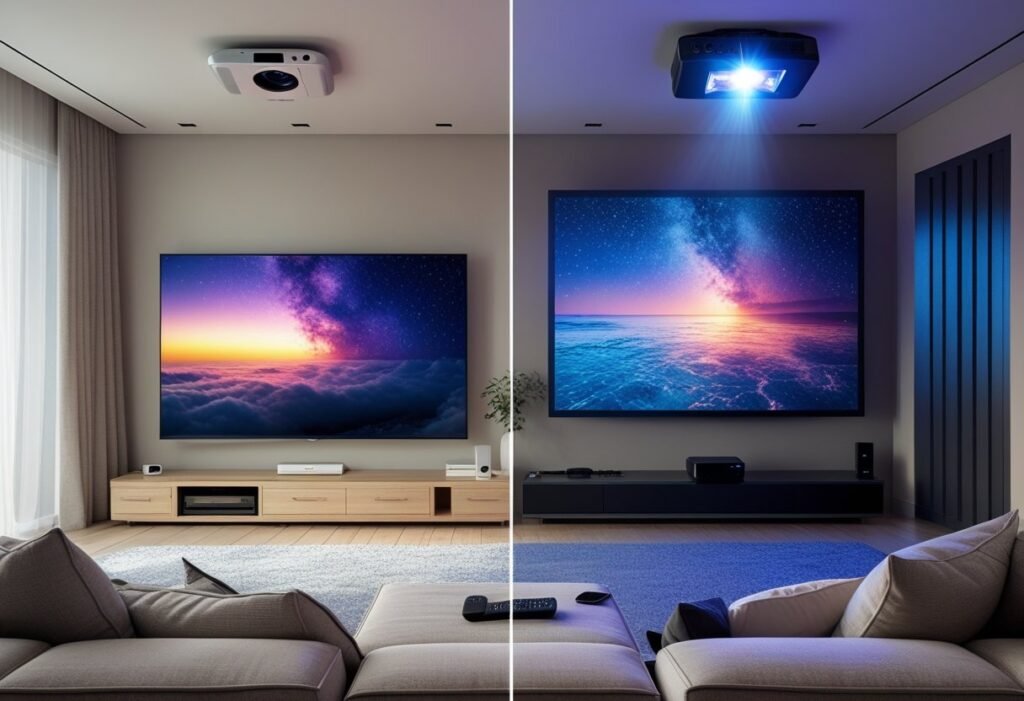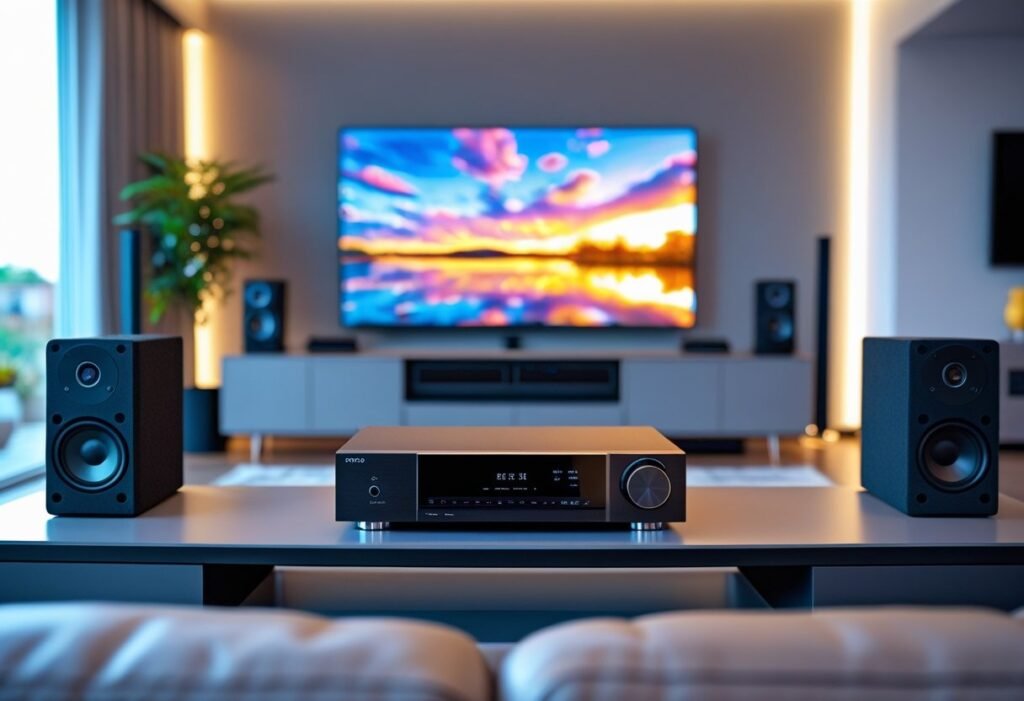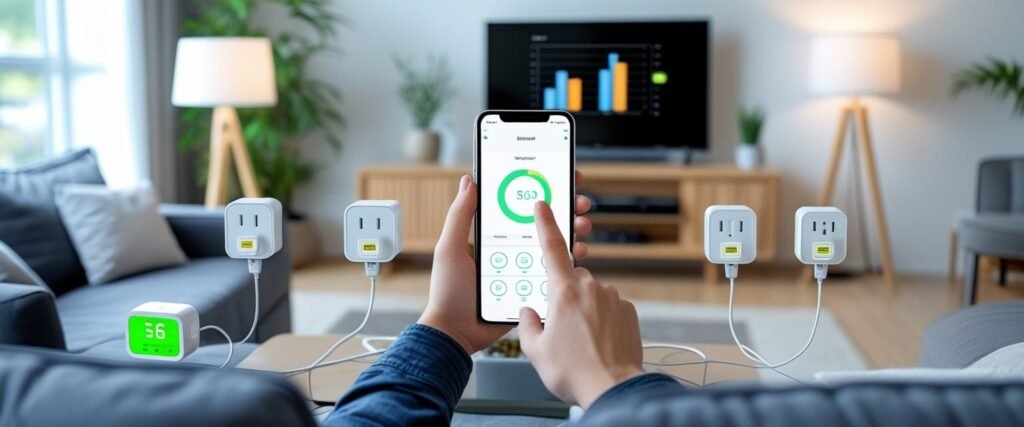Build your dream home theater in 2025 with expert tips and top gear picks—everything you need for an immersive setup, no matter your space or budget.
Home Theater Setup Guide for Beginners: Build Your Dream Entertainment Hub in 2025

Building your own home theater in 2025 can turn any room into a great place for movies, games, and shows. You just need the right equipment and simple setup steps to create a powerful entertainment hub that fits your space and budget. This guide helps you pick the best gear and shows you how to put everything together easily.
Whether you want a big screen, clear sound, or a cozy seating area, knowing what to buy and how to arrange it makes all the difference. You’ll find product links to help you choose reliable and affordable options without getting overwhelmed.
Get ready to upgrade your entertainment experience with a setup that works for you. This article will walk you through everything you need to know to make your home theater dream come true.
Key Takeaways
- You need basic gear to start building a home theater that suits your needs.
- Proper placement and setup improve your viewing and listening experience.
- Following clear steps helps you avoid common mistakes in setting up your system.
Essential Home Theater Components
To build a strong home theater, you need to pick the right screen, sound system, and control devices. You’ll also need quality cables and power tools to make sure everything works smoothly together.
1: Choosing the Right Display: TVs vs. Projectors

Your choice between a TV and a projector depends on your room and how you watch movies. TVs offer bright, sharp images and work well in rooms with some light. Look for 4K resolution and HDR for the best picture.
Projectors can give you a much larger image, perfect for dark rooms and big spaces. But they need a good screen and proper setup to avoid low brightness or blurry images. For a projector, consider laser models for longer lamp life.
If you are short on space or want easier installation, a TV is better. If you want the big cinema feel, go for a projector and screen combo.
Going with a 4K Smart TV? Here are our top picks:
- LG C3 OLED– Excellent contrast, ideal for movies and gaming.
- Samsung QN90C Neo QLED– Great for brighter rooms with punchy colors.
Going big with projectors? Check these ones out instead!:
- Epson EF-100 – Bright, compact, built-in Android TV.
- Anker Nebula Cosmos 4K – True 4K, immersive size.
- LG PF50KA– Portable and wireless, crisp image
2 : Speaker and Sound System Selection

Good sound is key to a home theater experience. You can start with a 5.1 speaker system, which means five speakers and one subwoofer. This setup provides clear, surround sound.
If you want richer sound, consider 7.1 or Dolby Atmos systems. Atmos adds height speakers, so sound comes from above you for more realism.
Choose speakers that fit your room size and seating. Floor-standing speakers deliver full sound but take space. Bookshelf speakers are smaller and can work on stands or shelves.
Check for easy setup options, like wireless speakers, if you want fewer cables. Subwoofers add deep bass for action scenes and music.
The fastest way to level-up your home theater? Ditch built-in TV speakers. Here’s your sound upgrade path:
Budget-Friendly Soundbars
- Sonos Beam Gen 2 – Amazon
Small footprint, Dolby Atmos, great clarity. - Vizio V-Series 2.1 – Amazon
Big sound on a small budget.
Surround & Dolby Atmos Systems
- Samsung HW-Q600C – Amazon
Includes a subwoofer + upward-firing speakers. - Vizio Elevate 5.1.4 – Amazon
Rotating speakers deliver immersive surround sound.
💥 Don’t skip the subwoofer. It delivers that punch in explosions, music, and deep dialogue.
3: AV Receivers: The Control Center

The AV receiver connects and controls your inputs and speakers. It boosts audio, switches between devices, and handles video signals.
When picking a receiver, look at the number of HDMI inputs. At least four inputs let you connect a Blu-ray player, gaming console, streaming device, and more. Make sure it supports 4K video and latest audio formats like Dolby Atmos.
Power output is important—it needs to match the speaker’s power handling. More watts mean louder, clearer sound without distortion.
Many models also have smart features, like voice control and wireless streaming, which can make your system easier to use.
Think of your AV receiver as the command center. It connects your devices, powers your speakers, and routes audio/video where it needs to go.
🧰 Features to Look For:
- At least 4 HDMI inputs (4K/8K supported)
- Dolby Atmos & DTS:X compatibility
- 80–120W per channel for solid power
- Smart features (Bluetooth, voice control)
🎯 Pro Tip: Match power output to your speakers for distortion-free sound.
4 : Cables, Power, and Connectivity Products
Good cables and power gear prevent problems in your system. Use high-speed HDMI cables for 4K and HDR signals. Cheaper cables might cause picture dropouts or no signal.
Power conditioners or surge protectors protect equipment from power surges and improve lifespan.
For speaker wiring, use speaker wire of the right gauge. Thicker wire (lower gauge number) is better for longer distances and stronger signals.
You might also want network cables if your system uses wired internet. Wireless connections can work but may cause delays or drops.
Label your cables for easier troubleshooting and future upgrades.
Don’t let cheap cables ruin your setup. Use certified high-speed HDMI cables for 4K/120Hz performance.
✔️ Other Essentials:
- Power strip with surge protection
- Proper gauge speaker wire (14 or 16 AWG)
- Ethernet cables (for lag-free streaming)
- Cable labels & covers for easy troubleshooting
💡 Keep power cables separate from speaker or HDMI lines to avoid interference.
Step-by-Step Setup and Optimization
You will focus on arranging your room well, connecting your system correctly, adjusting audio and video settings, and linking smart devices. Each step helps make your home theater work smoothly and look great.
Step 1: Room Layout and Acoustic Treatment
Start by choosing the best spot for your seating and screen. Place your main speakers at ear level when you sit. Keep the screen about 1.5 to 2.5 times the screen width away from you. Avoid placing seats against walls to reduce sound reflections.
Use soft materials like rugs, curtains, or acoustic panels on walls to control echoes. You can add bass traps in corners to manage low frequencies. Make sure the room is not too bright and lights can be dimmed to improve picture quality.
Step 2: System Assembly and Wiring
Unpack your equipment and arrange components such as the receiver, speakers, and media player. Connect speakers to the receiver using good-quality speaker cables. Follow the color codes on terminals (red for positive, black for negative) to avoid mistakes.
Use HDMI cables to connect your source devices (Blu-ray player, game console) to the receiver or TV. Hide cables with clips or cable covers to keep things neat. Keep power cords separate from audio cables to reduce interference.
Step 3: Calibration and Fine-Tuning Audio/Visuals
Turn on your receiver’s auto-calibration tool if it has one. This measures speaker distance and room sound with a microphone. Adjust speaker levels so sound is balanced no matter where you sit.
Set your TV or projector’s picture mode to “Cinema” or “Movie” for accurate colors. Adjust brightness and contrast so dark and bright scenes look clear without losing details. You can also manually change sharpness or color temperature if the image looks unnatural.
Smart Controls and Streaming Integration

Connect your system to Wi-Fi for easy streaming from apps like Netflix or YouTube. Use a smart remote or app to control sound, video, and other devices from one place.
You can link voice assistants such as Alexa or Google Assistant. This allows you to change volume, switch inputs, or play movies hands-free. Make sure all devices are compatible and updated with the latest software for smooth operation.
TaskKey TipRoom layoutPlace speakers at ear heightWiringUse labeled cables and hide wiresCalibrationUse auto-calibration toolsSmart controlsConnect to Wi-Fi and link voice control



